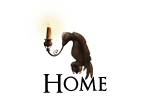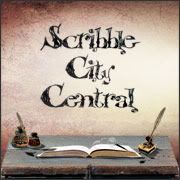Scribble City Central's fourteenth Fantabulous Friday comes from Herbie Brennan, author of the New York Times bestelling The Faerie Wars Chronicles. Herbie was kind enough to take part in my last series - The Mythic Friday Interviews - and you can read that post in full HERE.
Since then, the last book in Herbie's quintet has come out - The Faeman Quest. I don't want to put up any spoilers, but suffice to say that things have moved on a generation, and the appalling Lord Hairstreak is up to yet more nefarious tricks. It's inventive, imaginative - and, as always with Herbie, just a damn good story - probably my favourite of all of them. Since Herbie is clearly an expert on Fairies/Faeries/the Fae/the Good Folk/the Little People, I wanted to delve a bit further, and take advantage of his wisdom on the subject. What I was not expecting was the extraordinary true story which follows. There are more things in heaven and earth....
 |
| Herbie Brennan |
F is for Faerie
Good Folk of the Wild Places
Note the spelling. Note also that I’m writing this to a brief:
What is it?
What does it look like?
Where it is from?
Where and when did you first come across it?
Those sort of questions; not at all as easy to answer as you would imagine.
What is it? I don’t know.
What does it look like? When I was a child, it was a little figure, inches tall, equipped with wings, that flitted through fields of flowers and spelled its name fairy. When I encountered Shakespeare, it turned into a much bigger and more menacing being, minus wings for the most part, a creature of the forest, but really from another world. It spelled its name faerie. When I read Irish mythology, I discovered it came in several shapes and sizes — leprechauns, sidhe, God alone knows what else. All were so dangerous we called them the ‘Good Folk’ so they wouldn’t get annoyed with us.
Where is it from? Fairyland, I suppose — presumably a parallel reality as postulated in the doctrines of relativity theory and quantum physics.
Where and when did you first come across it? Ah, now things get interesting. About thirteen years ago, I awoke in the night to find a creature standing at the bottom of my bed. It was somewhere between six and seven feet tall, humanoid in form. For some reason I did not feel afraid.
I got out of bed to discover the entire outside wall of my bedroom had become transparent, allowing me to see across a vast sweep of countryside. The creature carried me above hedges and fields and set me down in Castleruddery Stone Circle, a megalithic monument a few miles from my home. I knew the circle well — I once wrote a book on Irish megalithic sites — but now it had a feature I had never seen before: two entrances set in the ground close by one another, each with steps leading downwards.
I took the nearest stairway and found myself in a different world, populated by tall, slender, silver-skinned people I thought of instantly as the sidhe. They were very cold, very distant and they frightened me. I retraced my steps hurriedly and tried the second entrance.
That world was inhabited by the Little People and they were utterly, absolutely delightful — cheerful and merry as children, none standing higher than my waist. I played with them until the entity that carried me here decided to carry me home again.
My wife was awake when I walked back into the bedroom. “I’ve just had the most extraordinary experience,” I said.
“Was it anything to do with that thing at the bottom of the bed?” she asked.
There were a couple more questions in the brief:
What draws you to it? The answer to that one is sort of obvious, wouldn’t you say?
What have you done to make it particularly yours? I wrote Faerie Wars. Or at least I sat at the computer and listened while the thing at the bottom of the bed dictated it to me.
My wife, darling that she is, commissioned a sculpture of the figure which now stands in a liminal space at the bottom of our garden. You can see a picture at www.herbiebrennan.com.
SCC: I have to admit to being a little...well, probably envious is the right word...of your experience with the thing at the bottom of the bed, Herbie. My own contact with fairyland is confined to one extremely clear childhood memory of a very small brown person in the hollow of a tree root. Nothing since, but I live in hope. Thank you so much for sharing that with us, and the sculpture is beautiful.
Next week: Nicola Morgan, Crabbit Old Bat takes on the Fates. Be afraid. In fact, be VERY afraid.

















